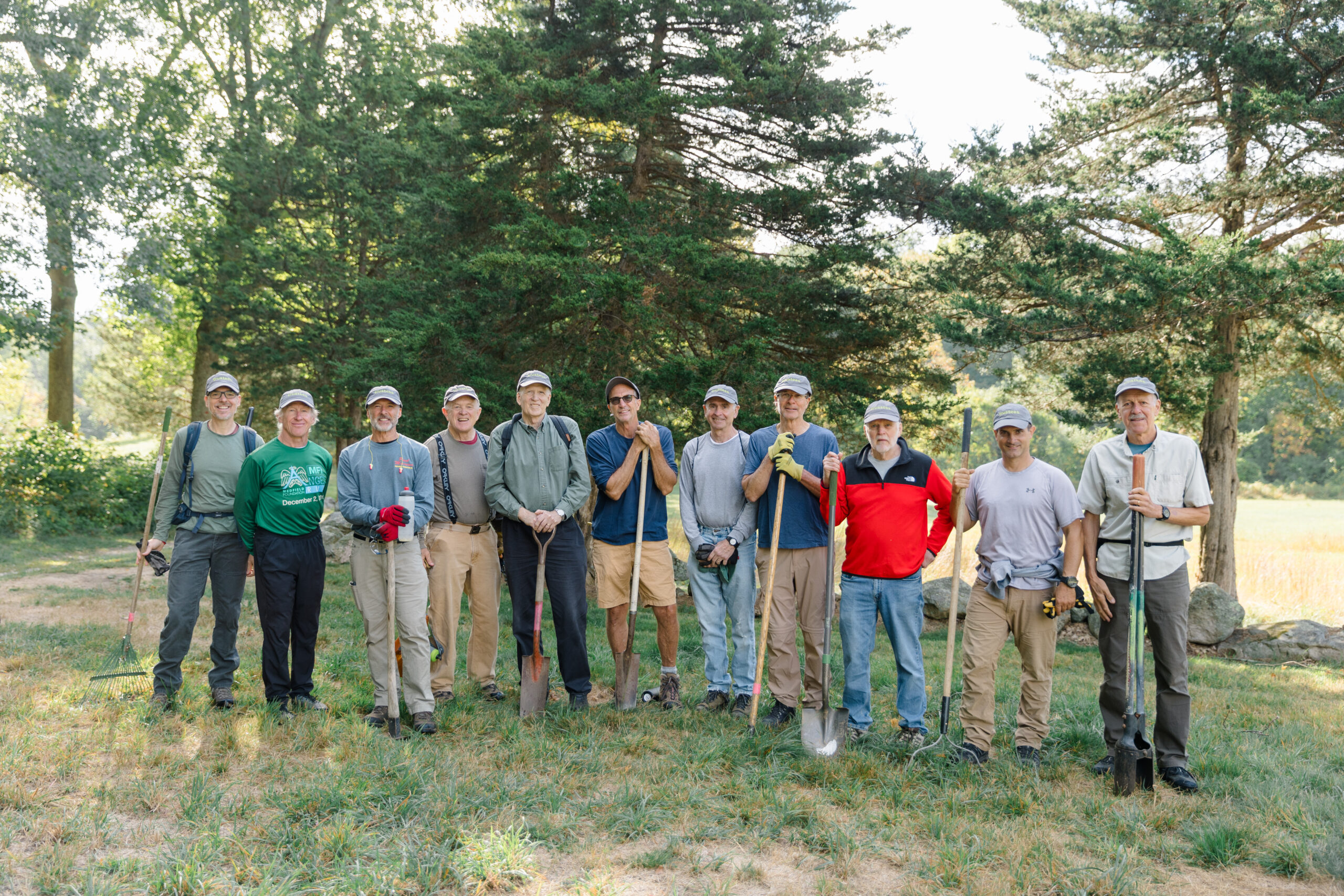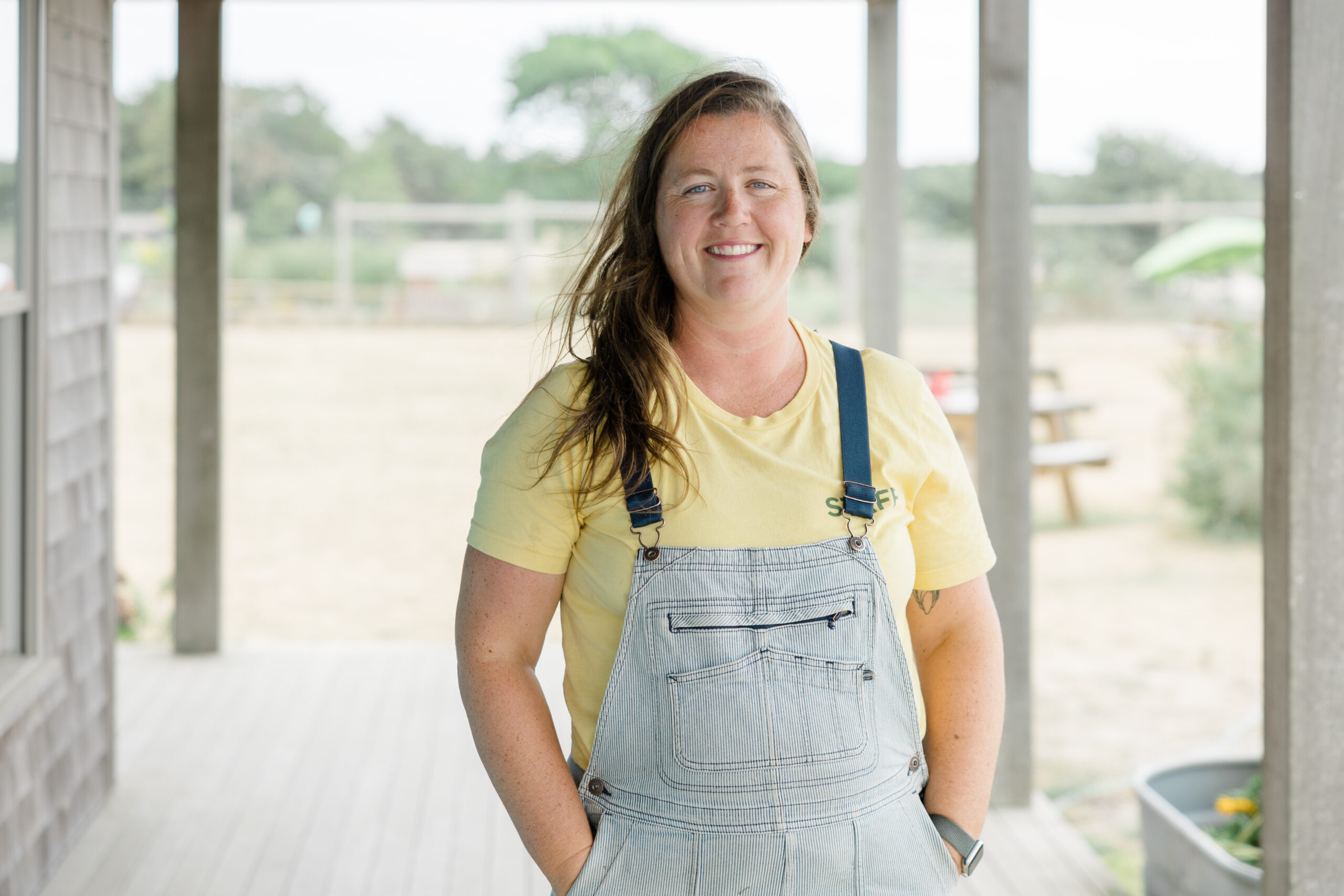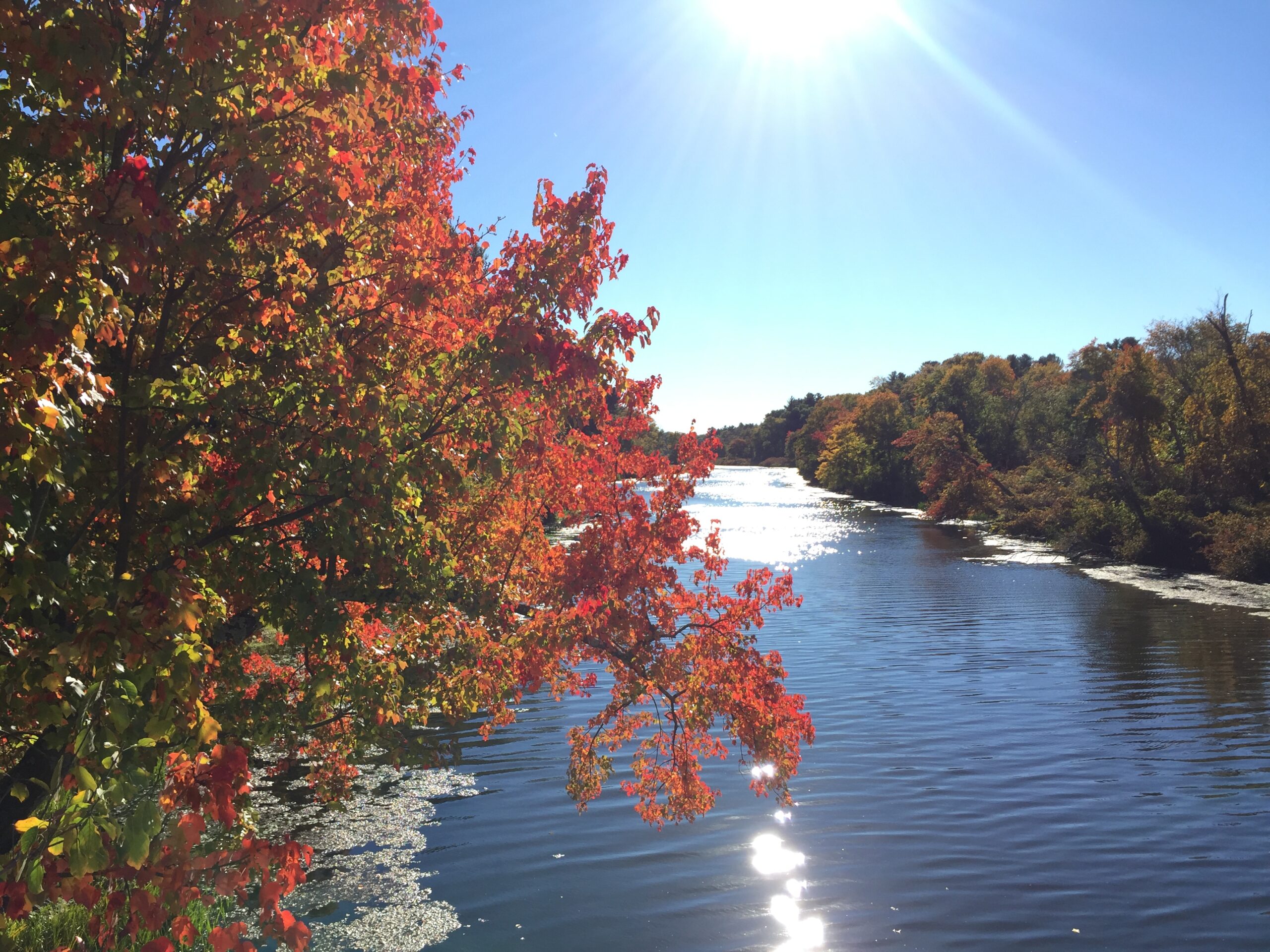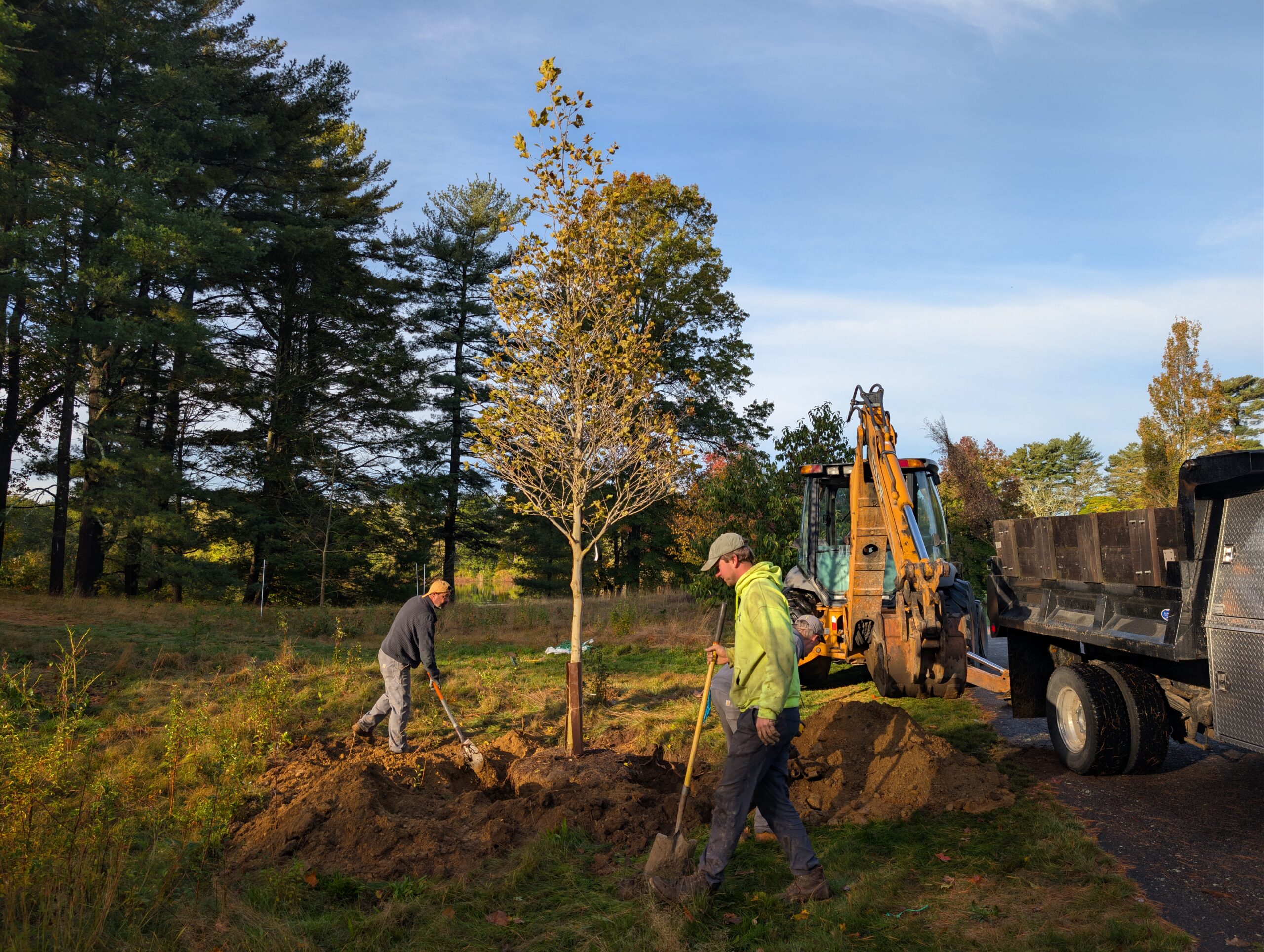We have little sense of just how long Remidas spent painting, but we know that it was not the first mural to grace the walls of the house. A 1915 letter that Chandler wrote to Helen apologizes for the thoroughness of his interior painting crew: remnants of an old mural on one wall of the Ballroom upstairs were completely covered when the house painters prepped all the walls with primer. Although the original mural was too obscured for anyone to make an exact copy for future reference, it did provide Chandler with the precedent to hire Remidas for this incredible gardenscape in the entry hall.
Other clues about creating a mural in the early 20th century hide behind the paint. Remidas needed a smooth surface on which to create his designs, and part of Chandler’s work was to provide this blank canvas. Over time, however, the canvas has cracked as the 20th-century plaster shifted and separated from the original 19th-century plaster. We know from John and Helen’s diaries, and from Chandler’s blueprints, that this main hallway originally had one staircase leading to a second-floor landing. The small cracks that appear today reveal that this original staircase was located at the back of the hall, arriving at the second floor right outside Helen’s bedroom door. Moreover, slight differences in both halves of the staircase today show that Chandler reused the original stair woodwork—in the front half of the staircase! Much like Remidas mixed his own paint to make the most of the pigments he had, so too did Chandler and his crew reuse architectural elements in order to conserve building supplies and original components of the house. This is an important step to understand, as much of Lisa’s work also requires stabilizing these cracks. Her work to fill in and secure these fragile areas means that we will be able to continue enjoying Remidas’ original paint and design for years to come.
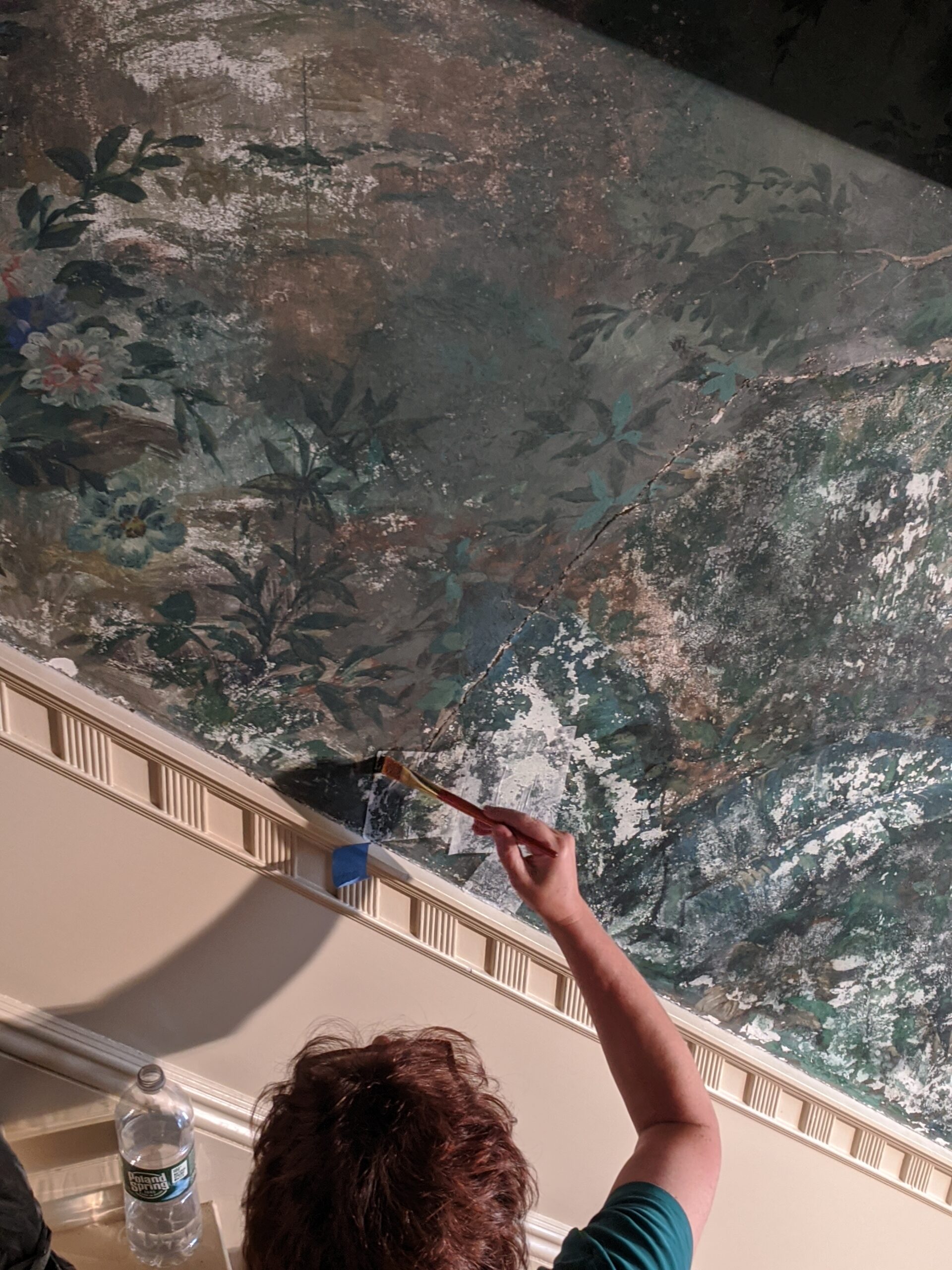
Figure 5: Here Lisa works on consolidating the original pigment around the crack where the old staircase was located. After she finished this step, she filled in the crack with a special plaster mixture to help secure the older plaster in place.
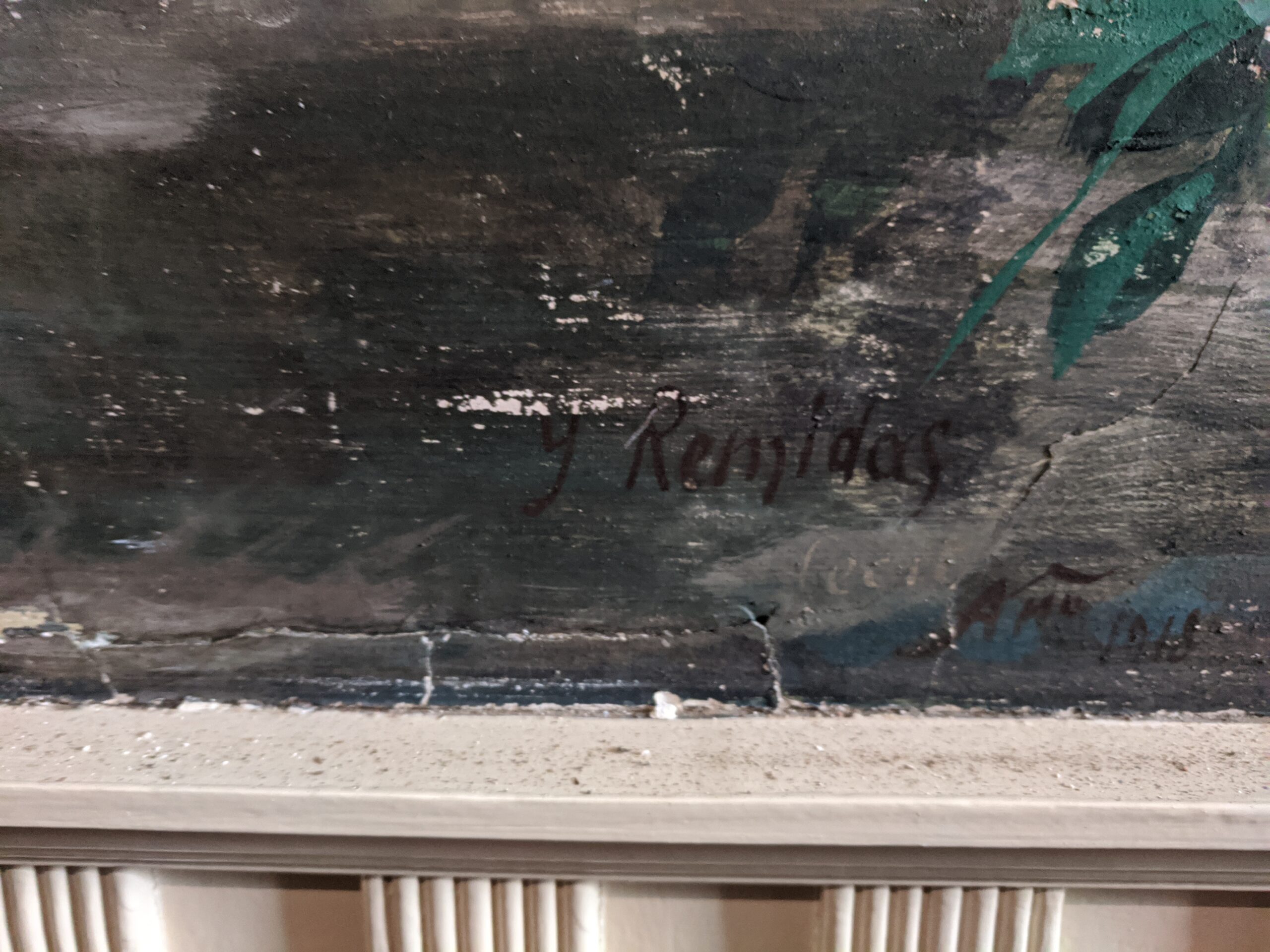
Figure 6: Remidas' signature: "J Remidas" and "Año 1918" just above the chair rail on the landing.
Luckily Remidas signed and dated this mural just above the wainscoting on the stair landing, and thanks to Lisa’s work we are also learning more about his personal approach every day. In the early 20th century it was much more common for artists to mix their own pigments, a practice that Remidas followed as well. Most early 20th-century murals that Lisa has conserved use no more than five or ten different colors and shades, and the blend of greens, grays, and blues around the cherub featured in Part I might look like just a few different colors at first glance. However, Remidas used close to thirty different tones in just this one area! As Lisa works through each section of the mural, there are slight differences in each brush stroke that correspond to Remidas’ painstaking work over many days, weeks, and months—which also means that filling in the missing paint today is an expert job requiring close examination and patience.
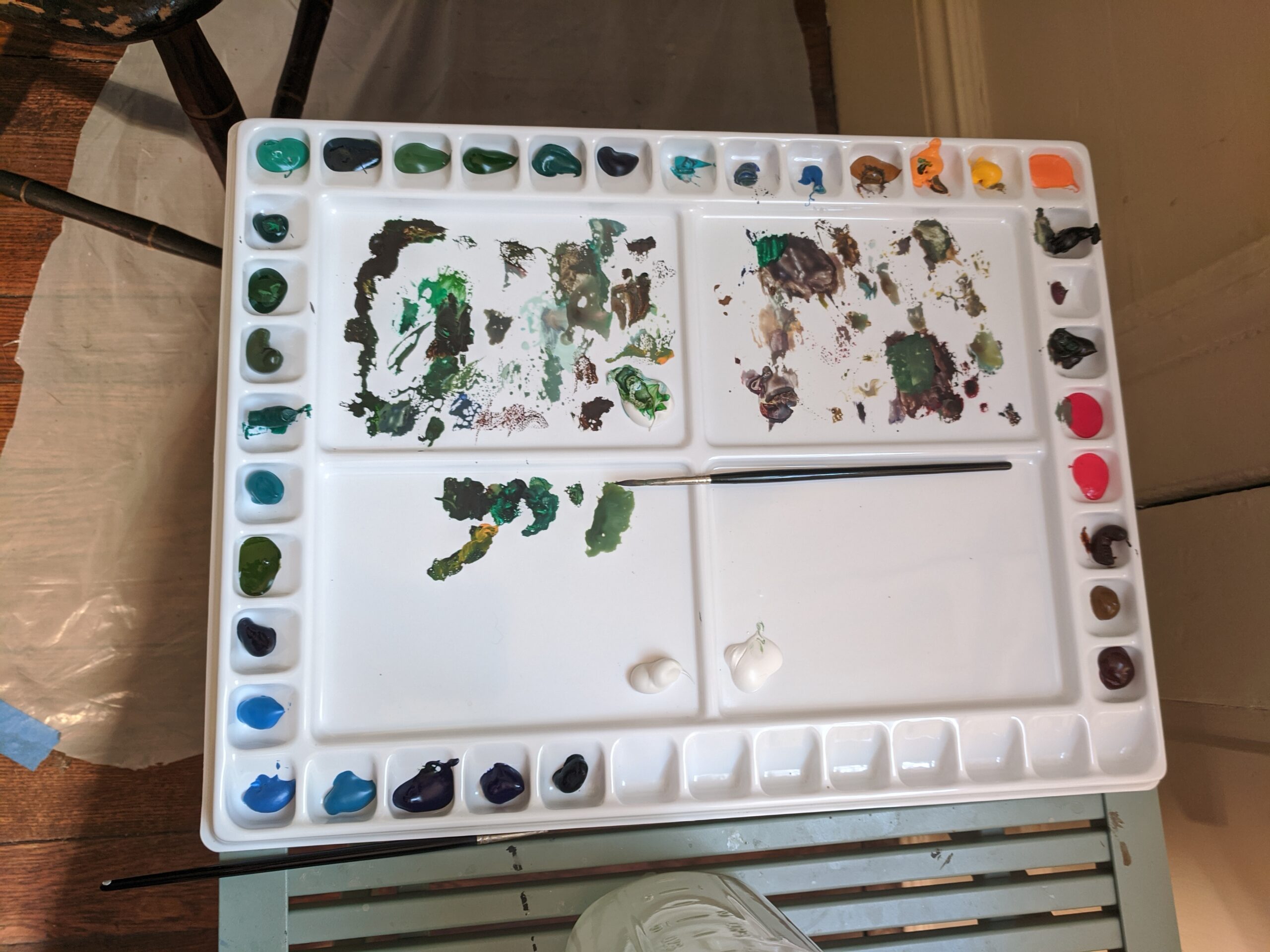
Figure 7: Our conservator’s palette partway through in-painting one section of the foliage. Just one 2 x 2 foot square required all sorts of green tones!
Remidas’ lush gardens painted all over the first and second floor walls might seem European, almost foreign in style; but take a look outside the house on a warm June day and you’ll see lush greenery, swaying willow branches, pale pink roses, and garden statuary that looks like they belong in a garden at one of the many French and Italian villas that Helen and John visited. The time and effort that Remidas devoted to this mural comes through in each day of Lisa’s work, from mixing the right pigment to securing old plaster. We’ve even needed to create custom scaffolding so she can reach the top areas of paint over the landing, something that Remidas must have needed as well. We hope to have this latest conservation effort completed in the spring of 2021, and we look forward to sharing it with visitors soon. Stay tuned into our social media and virtual programming for more information and sneak peeks into the mural’s history and its conservation in action!
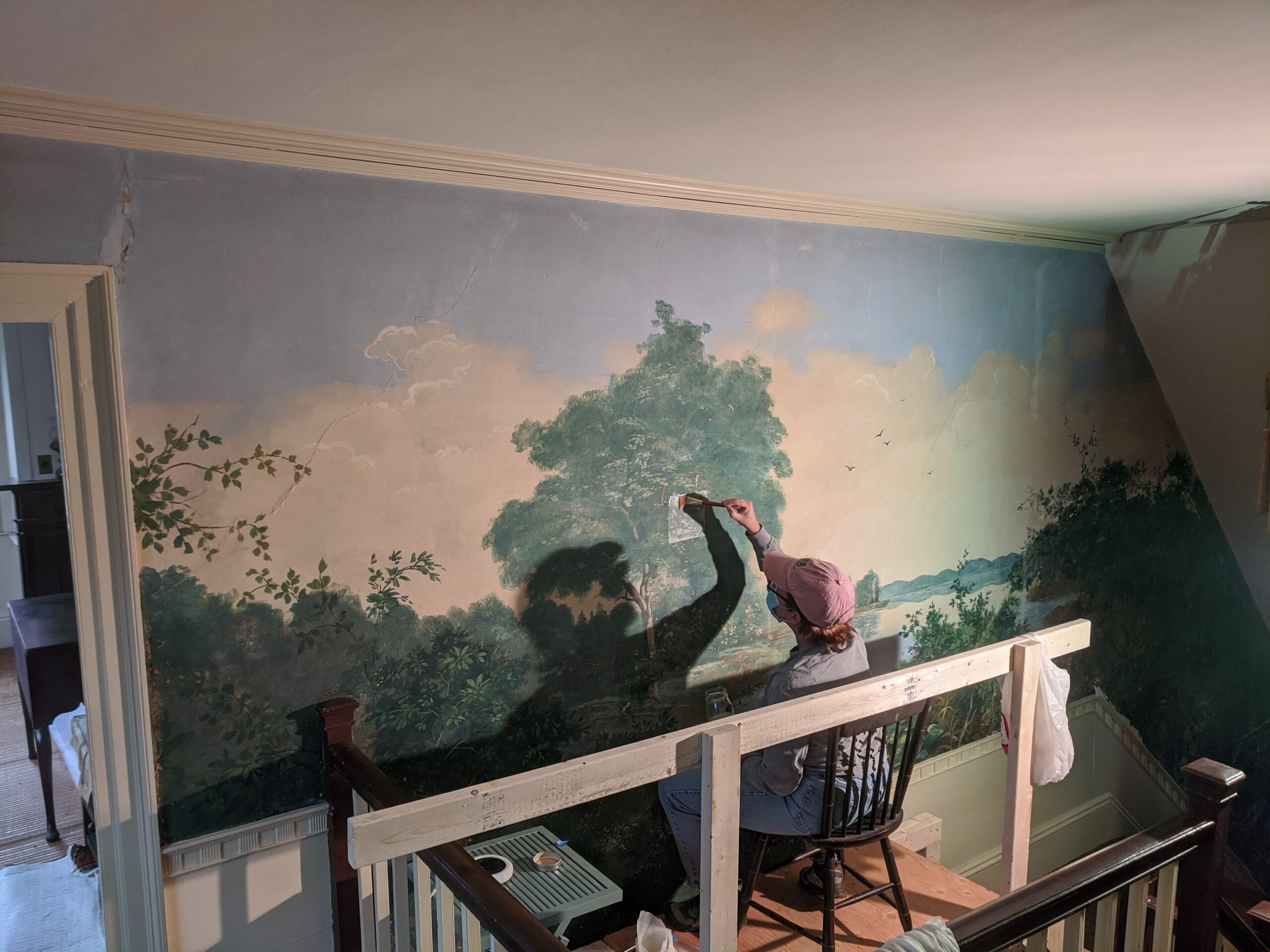
Figure 8: Conservator Lisa Mehlin working on the final section of consolidation. She is sitting on custom-built scaffolding to fit over the front half of the staircase to reach the tall trees you see here.
